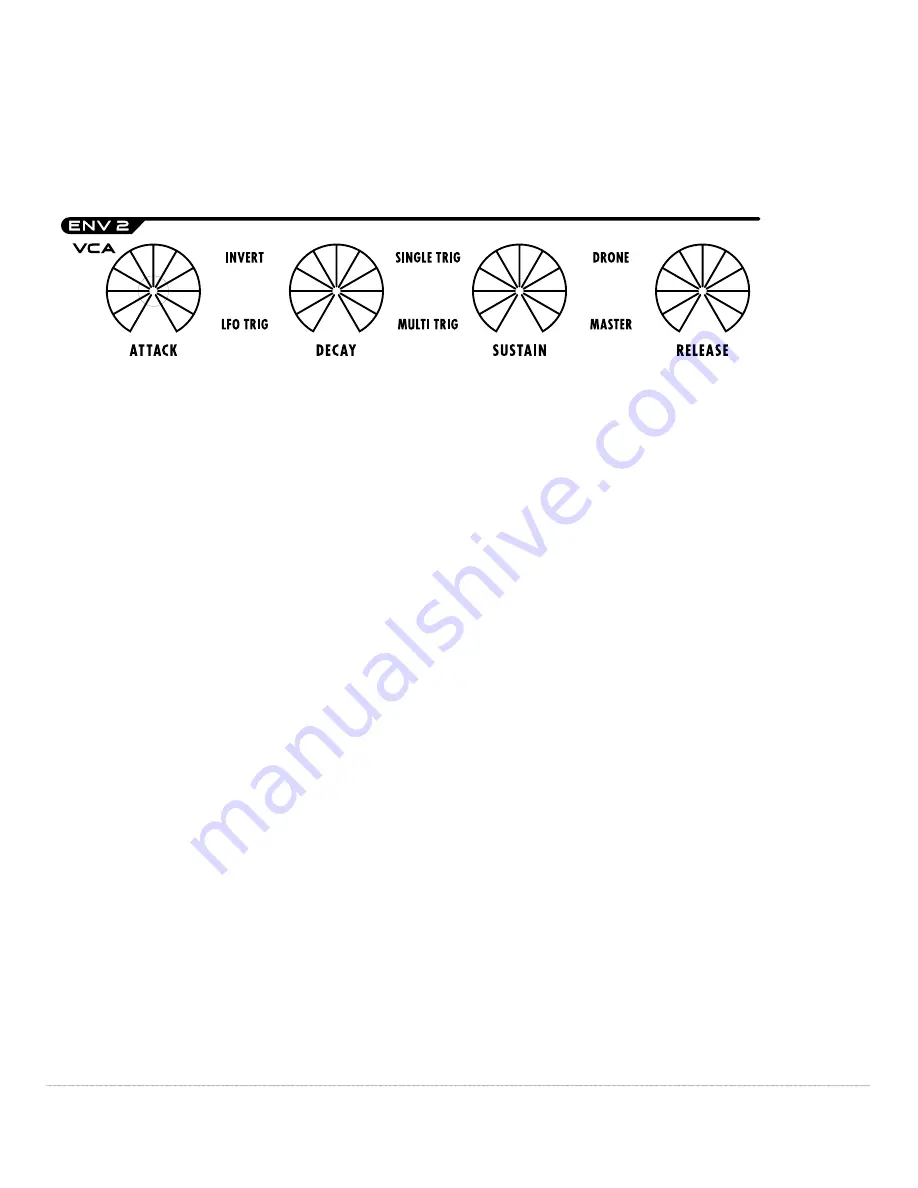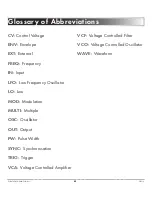
Studio Electronics Boomstar Manual
50
Panels
signal is composed of the same four segments: initial rise, decay, sustain
level, and release time. The volume of the note is shaped according to the
settings of the envelope controls. These four parameters are shown below.
The
ATTACK
knob sets the attack time. The attack time determines the
duration of the initial rise in volume to a peak. Notice the sound take on
different qualities as you increase from a short sharp attack to a long slow
crescendo. Switching
INVERT
on reverses the behaviour of the normal ADSR
envelope... Wait this sound familiar: ENV 2’s invert functions is an exact
clone (what used to be called a carbon copy) of ENV 1’s. The
LFO TRIG
(Low
Frequency Oscillator Trigger) switch selection phase locks the start of the
LFO’s wave with the start of the envelope.
The
DECAY
knob sets the decay time. The decay time determines the
duration of the drop in volume from the initial peak to the sustain level.
Shorter decay times will produce more percussive––snappy sounds, longer
times “open” up and stretch out the sound, like a good old fashioned
“woodshedding” session. Switching
SINGLE TRIG
(single trigger) on forces the
decay cycle of both ENV 1 and Env 2 to restart with every key press, or
note on command. Switching
MULTI TRIG
(multiple trigger) on allows for the
continuation of the decay cycle through a legato, or multi-note phrase.
The
SUSTAIN
knob sets the sustain level. The sustain level determines the
volume level at which the envelope contour levels off after the attack
and decay. Set at “0,” no sustain level is heard. Set at "5," the contour
diminishes to a low volume. Set at “10,” no drop in volume is heard after
the initial peak is reached. Flipping on the
DRONE
switch frees up fingers by















































